#Eva Hess Archive
Explore tagged Tumblr posts
Text

Eva Hess Archive. Card from Vic Moscoso, ca. 1965.
45 notes
·
View notes
Text
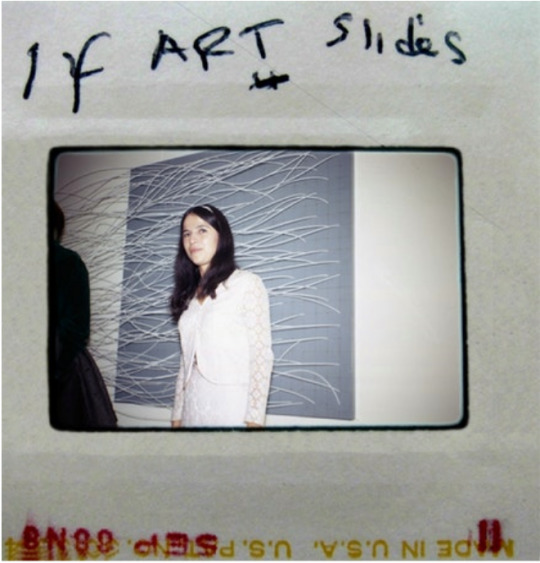
Photo of Eva Hesse at the opening of "Eccentric Abstraction" by Norman Goldman c 1966
47 notes
·
View notes
Text

Installation view of an Eva Hesse exhibition at the Fischbach Gallery., 1968. Fischbach Gallery records, 1937-2015. Archives of American Art
17 notes
·
View notes
Text
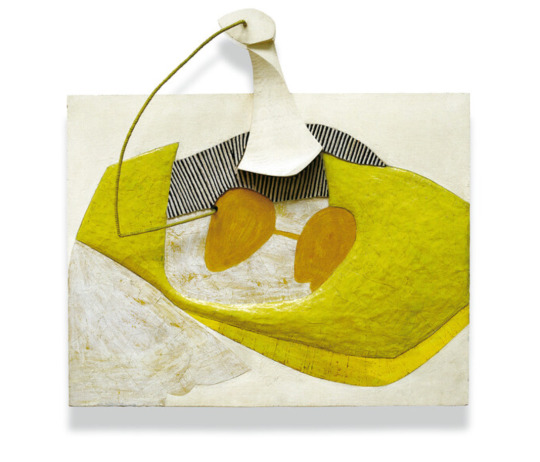
EVA HESSE, H + H, 1965
Varnish, ink, gouache, enamel, cord, metal, found object (wood), paper-caché, unknown modeling compound, particle board, wood
68.6 x 69.9 x 12.4 cm / 27 x 27 1/2 x 4 7/8 in
Courtesy of the Ursula Hauser Collection, Switzerland © The Estate of EvaHesse | Photo: Archive Ursula Hauser Collection, Switzerland
8 notes
·
View notes
Text
Hogwarts 1933
read it on AO3 at https://ift.tt/hB5DNT2 by Varangian9 Crossover between Harry Potter and early to mid 20th century history. Words: 285, Chapters: 1/1, Language: English Fandoms: Harry Potter - J. K. Rowling, Historical RPF, Political RPF - German 20th c., Political RPF - Russian 20th c., Political RPF - US 20th c., Political RPF - UK 20th-21st c. Rating: Not Rated Warnings: Creator Chose Not To Use Archive Warnings Categories: F/M Characters: Harry Potter, Draco Malfoy, Daphne Greengrass, Astoria Greengrass, Tom Riddle | Voldemort, Albus Dumbledore, Severus Snape, Theodore Nott, Hermione Granger, Ron Weasley, Franklin Delano Roosevelt, Winston Churchill (1874-1965), Eleanor Roosevelt, Harry Truman, Charles de Gaulle, Theodore "Teddy" Roosevelt Jr., Adolf Hitler, Joseph Goebbels, Hermann Göring, Heinrich Himmler, Eva Braun, Tracey Davis (Harry Potter), Wilhelm II von Preußen Deutscher Kaiser, Reinhard Heydrich, Vladimir Lenin, Joseph Stalin, Leon Trotsky, Lavrentiy Beria, Vyacheslav Molotov, Joachim von Ribbentrop, Herbert Hoover, Nikolay Alexandrovich Romanov | Nicholas II of Russia, Alix of Hesse | Alexandra Feodorovna, Arthur Neville Chamberlain, Nadezhda Krupskaya, Woodrow Wilson Relationships: Daphne Greengrass/Harry Potter, Astoria Greengrass/Draco Malfoy Additional Tags: Slytherin Harry Potter, 20th Century read it on AO3 at https://ift.tt/hB5DNT2
2 notes
·
View notes
Text


˚˖𓍢ִ໋🌷͙֒✧˚.🎀༘⋆ Hello, everyone! ˚˖𓍢ִ໋🌷͙֒✧˚.🎀༘⋆
My name is Ani (that’s me ironically posing in front of the Met), and I am an aspiring provenance researcher and cultural heritage lawyer! This Tumblr serves as the archive of the field notes I’ve collected in my leisurely studies and research.
I graduated with a Fine Arts degree, and majored in Creative Writing, so I got to take up classes on Art History, Literary and Cultural Theory, and, of course, some Fine Arts classes too! I am yet to apply to law school!
Updates will be posted on this blog!
🤍 hey there newcomer! need help navigating through my blog?


🌷͙֒ Masterlist! 🌷͙֒
[📖 BOOK] Gerstenblith, Patty. Art, Cultural Heritage, and the Law: Cases and Materials. Carolina Academic Press, 2004.
[🧑🏫 TALK] Theories and Movements of Filipino People: Philippine Artifacts in Foreign Lands and Possibilities for Rematriation, Marian Pastor Roces
[📑 RESOURCE] Restitution and Repatriation: A Practical Guide for Museums in England. Arts Council England, 2023.
[✍️ ESSAY] The Melancholic Woman: Eva Hesse, Ennead (1965), and Trauma, De-strung

✧📚⋆ Now Reading: ✧📚⋆
Who Owns History? Elgin's Loot and the Case for Returning Plundered Treasure by Geofferey Robertson

˚˖𓍢ִ໋ 🎞️ Upcoming: ˚˖𓍢ִ໋ 🎞️
Batkin, Norton. Conceptualizing the History of the Contemporary Museum: On Foucault and Benjamin. Philosophical Topics, vol. 25, no. 1, 1997, pp. 1–10.
Lord, Beth. Foucault’s museum: difference, representation, and genealogy. University of Dundee, 2006.


#art history#art#antiquities#culturalheritage#culture#literary theory#psychoanalysis#society#literature#history
5 notes
·
View notes
Text
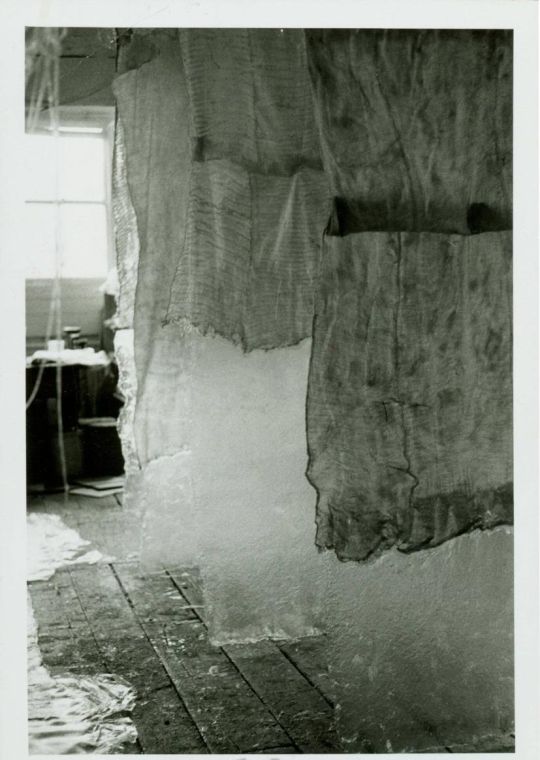
Eva Hess Archive. Photograph of Eva Hesse Artwork: Contingent, 1969.
1 note
·
View note
Text
5 Questions with Kate Zambreno, Author of To Write As If Already Dead
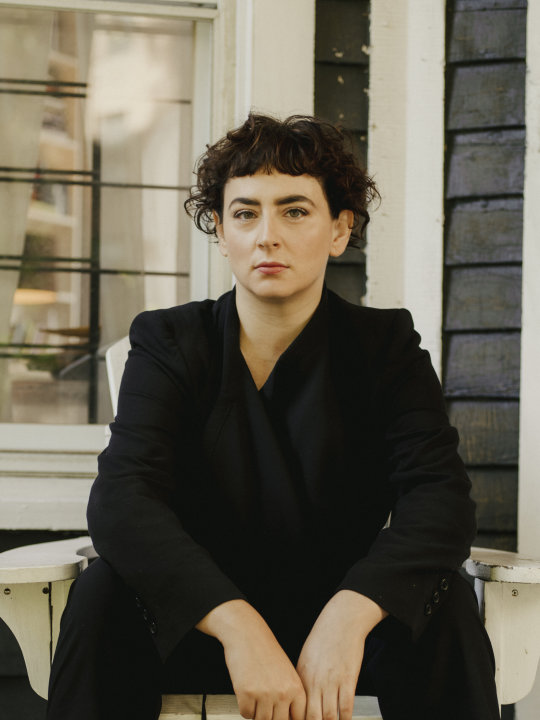
Kate Zambreno is the author of many acclaimed books, including Drifts (2020), Appendix Project (2019), Screen Tests (2019), Book of Mutter (2017), and Heroines (2012). Her writing has appeared in the Paris Review, Virginia Quarterly Review, and elsewhere. She teaches in the graduate nonfiction program at Columbia University and is the Strachan Donnelley Chair in Environmental Writing at Sarah Lawrence College. Her newest book is To Write As If Already Dead, published by Columbia University Press.
Kate Zambreno will be in conversation with T Fleischmann about her new book in our City Lights LIVE! virtual event series on Wednesday, June 30th, 2021.
*****
Where are you writing to us from?
I’m writing to you from the first floor of the Victorian house we have rented in Ditmas Park, Brooklyn, for nearly a decade. We haven’t left this entire year. I am on the couch at the end of a long day. There’s an early evening light coming in through the front window, my dog Genet is vigilantly expecting dinner, my four-year-old is tearing around outback, while her baby sister and her father watch.
What’s kept you sane during the pandemic?
Going to Prospect Park regularly this year—even in January and February—and watching my daughter run around, and make mudpies, and make forts and strange tree sculptures by dragging around fallen branches, sticks, rocks, and logs.
What books are you reading right now? Which books do you return to?
I am writing the introduction to the Portuguese writer Maria Judite de Carvalho’s novel, Empty Wardrobes, translated by Margaret Jull Costa, and published by Two Lines Press, so I’m thinking through that work of interiority and domestic spaces and oppression and grief.
I just finished being in conversation with Cristina Rivera Garza at Sarah Lawrence College, where I teach, and a work that Rivera Garza kept mentioning in conversation with her newest essay collection Grieving: Dispatches from a Wounded Country (translated by Sarah Booker and published by Feminist Press) is Christina Sharpe’s In the Wake: On Blackness and Being (Duke University Press), so that’s up next.
I’m reading everything I can get my hands on about Eva Hesse, including the diaries, for a novel I’m writing, Foam, that thinks through different traumas and textures, including soft sculpture.
Speaking of Two Lines Press, I’ve been loving the work of Marie NDiaye in translation, specifically Self-Portrait in Green. I’ve also been returning frequently to works by Japanese women in translation, specifically, Yuko Tsushima, not only Territory of Light but also her stories, and Hiroko Oyamada’s novels, all published in translation by New Directions.
For a class I teach at Sarah Lawrence, on writing and elegy and the anthropocene, I’m reading Anna Lowenhaupt Tsing’s The Mushroom at the End of the World: On the Possibility of Life in Capitalist Ruins (Princeton University Press). Hedi El-Kholti, my editor at Semiotext(e) is sending me Peter Sloterdijik’s Spheres trilogy in the mail, because I need to read a book called Foams! And so I’m looking forward to that. I also am looking forward to reading Mattilda Bernstein Sycamore’s The Freezer Door, and Aisha Sabatini Sloan’s Borealis.
Which writers, artists, and others influence your work in general, and this book, specifically?
The diptych structure of the book was inspired by reading Enrique Vila-Matas’s Because She Never Asked (published in translation by New Directions), which begins with the story written for the conceptual artist Sophie Calle to live out—the second half involves the Vila-Matas narrator writing the story. Vila-Matas is so ludic and conceptual and in love with literature and probably one of the writers that inspires me the most for the past two books (Drifts and the Guibert study). And Sophie Calle as well—the concept of a noirish or speculative essay like The Address Book—and in To Write As If Already Dead I think through Calle’s relationship with Hervé Guibert and how they fictionalized each other in their works. The photobooks of Moyra Davey, the relationship of her essays and diaristic works to her images, are incredibly important to me, like Burn the Diaries and Les Goddesses. Anne Carson, especially her talks and pieces collected in Float and her Short Talks. Bernhard and Sebald.
Of course, I should say the writing of Hervé Guibert, and that’s the right answer—the book in general was catalyzed by him, thinking through his whole project, the diary, the later illness works, his relationship to speed, to tone, to writing friendships. There’s also really interesting writing that’s channeling Guibert now—from Moyra Davey’s work, to Andrew Durbin’s novel Skyland, that Nightboat published.
So much of the first half of To Write As If Already Dead is a love letter to the community I formed online now a decade ago and whose writing I always feel in conversation with—my friends who are writers are often my favorite writers, and doing such tender and vital work, especially T. Fleischmann, who I’m delighted to be in conversation with at City Lights. I love them and their work and we have spoken to each other about Guibert for a while. Others like Sofia Samatar, and Danielle Dutton, who also runs Dorothy, a publishing project.
The book is dedicated to Bhanu Kapil, who I first met online a decade ago as we each wrote these unruly notebook projects on our blogs, and so much of the study feels like continuing the conversation we’ve been having the past few years, about how to write and survive under capitalism, on caretaking vs art. I think Bhanu is one of the most important and thrillingly playful and exciting writers alive.
If you opened a bookstore, where would it be located, what would it be called, and what would your bestseller be?
I think it would be on Cortelyou Road in Ditmas Park, as we don’t have a bookstore here. It would be called Finger and Thumb – when my partner John Vincler and I always spoke about having a bookstore that’s what we wanted to call it, it’s from Beckett and seems to gesture to the eroticism of actual print. I’m imagining we would sell artists’ books and chapbooks (like Sarah McCarry’s Guillotine series), art presses, presses like Semiotext(e) and Dorothy and Two Lines and Fitzcarraldo and Nightboat and New Directions and Transit Books. I think that our bestseller would be Saidiya Hartman’s Wayward Lives, Beautiful Experiments: Intimate Histories of Riotous Black Girls, Troublesome Women and Queer Radicals, because it’s the book we often refer to amongst each other and urge on others to read, especially those interested in taking care in writing from research and archives, of what the archives have neglected, and the imaginative possibility of resurrecting the lives of others.
28 notes
·
View notes
Photo

AT A REOPENED MoMA, EVA HESSE’S EARLY PORTRAIT SEEMS TO POINT TO HER DEATH
THE DAILY PIC: Today’s image is a 1960 portrait by Eva Hesse—another work from a reopened MoMA The Museum of Modern Art, by yet another woman artist now claiming wall space.
It’s an amazingly powerful “portrait,” from a moment when—as we’ve largely forgotten—everyone was looking for a New Figuration that could take over from tired Abstract Expressionism. (Pop Art came along instead, out of left field.)
Hesse’s piece seems to speak of her tortured childhood as a little girl fleeing Nazis. From our point of view, it also seems to presage the tortured death she suffered from brain cancer, only a decade later—after she’d hit her stride making expressive abstraction, after all. That lump on her head looks almost tumorous.
For a full survey of past Pics visit blakegopnik.com/archive.
14 notes
·
View notes
Link
http://www.reactfeminism.org/entry.php?l=lb&id=211&e=a&v=&a=Tania%20Bruguera&t=http://www.reactfeminism.org/entry.php?l=lb&id=211&e=a&v=&a=Tania%20Bruguera&t=
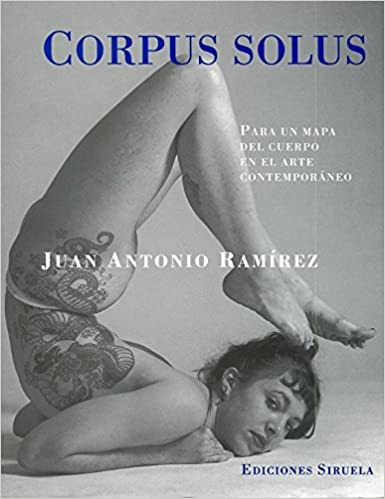
Ramirez, Juan Antonio
Corpus Solus
Editorial: Ediciones Siruela
https://www.lacentral.com/book/?id=9788478446315
Art-corporel-o-el-mordisco-hecho-arte
Corporeidades
https://blog.rtve.es/metropolis/2020/09/metr%C3%B3polis-compilados-el-cuerpo.html
“Volver dentro del cuerpo”
es la II parte de la exposición de los proyectos beneficiarios de las Ayudas Injuve para la Creación Joven en la modalidad de Artes Visuales en las líneas de producción y de movilidad, con las propuestas de los 17 jóvenes creadores beneficiarios de las Ayudas a la Creación Joven de Injuve presentadas en los últimos meses en la Sala Amadis de Madrid.
http://www.injuve.es/creacionjoven/noticia/volver-dentro-del-cuerpo-ayudas-exposicion-artes-visuales-ii?
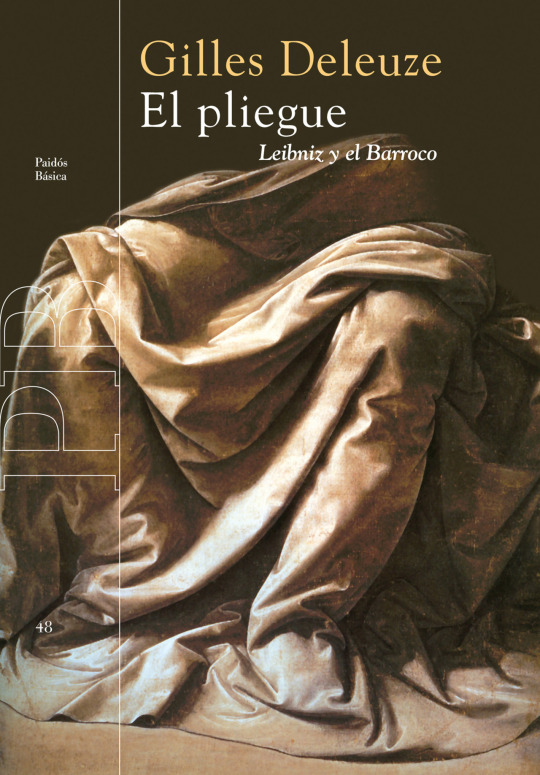
https://www.planetadelibros.com.ar/libro-el-pliegue-leibniz-y-el-barroco/131964
.Ana Mendieta jeudepaume.
reactfeminism.org/
rebecca-horn-reactfeminismorg
awarewomenartists.com/
eva-hesse-aware-women-artists-femmes-artistes
lucysombra. lucia-egana lucia-egana-rojas/
Tania Bruguera Homenage a Ana Mendieta
http://www.reactfeminism.org/
Lygia Clark Mémoria do Corpo
Cossos que encara importen
https://www.cccb.org/ca/participants/fitxa/judith-butler/16382
https://www.cccb.org/ca/multimedia/videos/judith-butler/222317
http://www.cccb.org/ca/participants/fitxa/judith-butler/16382
https://www.cccb.org/ca/publicacions/fitxa/82-cossos-que-encara-importen-bodies-that-still-matter/228094
/cossos-genere-identitats/
/cos-i-casa/225075
https://www.cccb.org/cos
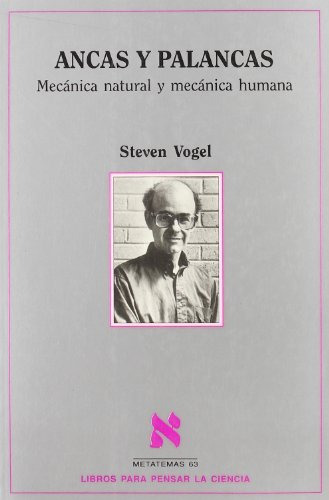
Qui és millor dissenyadora, la naturalesa o l'homo sapiens?
…Les nostres frontisses giren gràcies al lliscament de peces dures, però les frontisses naturals (com les orelles del conill) giren doblant els seus elements flexibles.
Enfront de la tecnologia humana, fruit de només deu mil anys d'avenços i errors, la mecànica que trobem en el món natural és el resultat evolutiu de milers de milions d'anys. Les dues «tecnologies» comparteixen un mateix entorn físic -els mateixos materials, la mateixa atmosfera i la mateixa gamma de temperatures- i estan sotmeses a la mateixa força gravitatòria…
VOGEL STEVEN. Ancas y palancas. Tusquets Editores. Barcelona 2000
http://www.planetadelibros.com/libro-ancas-y-palancas/89581
https://www.wwnorton.co.uk/books/9780393319903-cats-paws-and-catapults
Préstec consorciat:
http://bit.ly/2kebRJz
¿Por qué nos invaden las alúas?
https://ideaimateria.tumblr.com/post/631315113818931200/ ¿Por qué nos invaden las alúas?
Anthropocene
Anthropocene
anthropocene/
Simbiocè
waste
upcycling
The DeepBlue PlanetII Series 1 Episode 2 of 7
https://www.bbc.co.uk/programmes/b09f8vtb
https://www.rtve.es/alacarta/videos/el-documental/documental-planeta-azul-2-profundidades/4983638/
https://www.youtube.com/results?search_query=The+Deep%2B+Blue+Planet+IISeries+1+Episode+2+of+7
youtube
canvi climàtic
Canvi Climàtic
WASTE
Canvi climàtic
www.cambio.website/
the-shape-of-a-circle-in-the-mind-of-a-fish-the
http://www.monografica.org/01/medio ambiente
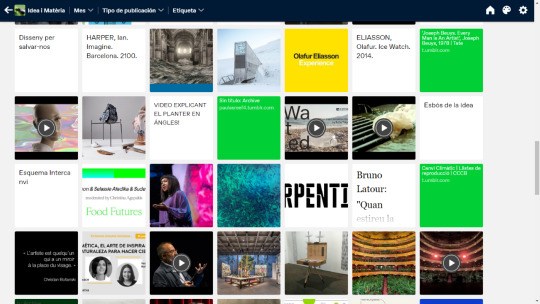
STUDIO KLARENBEEK & DROS - Algae Lab
Al investigar nuevos valores para los biomateriales locales en los humedales, el proyecto Labo Algues explora el potencial de crecimiento de las microalgas a nivel local. Estas algas luego se transforman en biopolímeros que pueden reemplazar a los plásticos no biodegradables a base de aceite fósil. En la actualidad, los diseñadores están trabajando en una serie de objetos relacionados con la cultura y la historia de la región. Una vez producidos, deben satisfacer las necesidades de las actividades y visitantes de Luma, quienes podrán experimentar la cadena de producción circular, desde la materia prima hasta el producto final. https://atelier-luma.org/ https://atelier-luma.org/projets/labo...
Researching new values for local wetland bio-materials, the project explores the potential of growing micro-algae locally. These algae are then converted into biopolymers that can replace non-biodegradable, fossil oil-based plastics. Currently, the bio-laboratory is working on a series of objects related to the region’s culture and history. Once produced, they should serve the needs of Luma’s activities and visitors, who will be able to experience the circular production chain from raw material to final product.
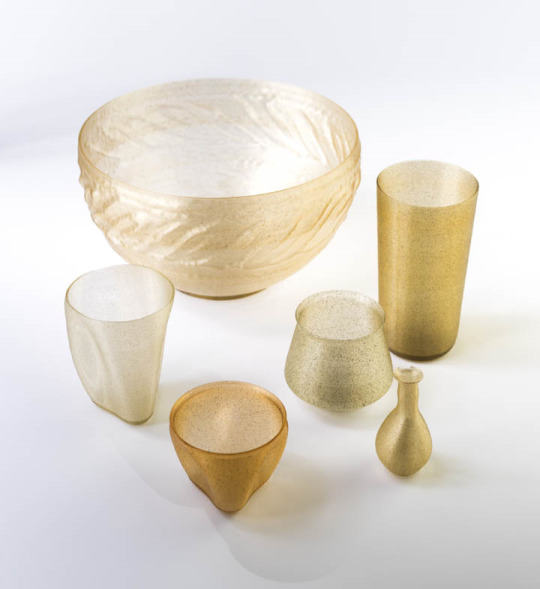
NATURALEZA: TRIENAL DE DISEÑO DE COOPER HEWITT CON CUBE DESIGN MUSEUM ... remedia, simula, salva, nutre, aumenta y facilita ...
Los diseñadores están forjando conexiones significativas con la naturaleza, inspirados por sus propiedades y recursos. Sus procesos de colaboración (trabajar con la naturaleza y en equipos en múltiples disciplinas) son respuestas optimistas en este momento en el que los humanos se enfrentan a las complejidades y condiciones de nuestro planeta. Impulsados por un sentido de urgencia, los diseñadores miran a la naturaleza como guía y socio.
Con proyectos que van desde prototipos experimentales hasta productos de consumo, instalaciones inmersivas y construcciones arquitectónicas, Nature — Cooper Hewitt Design Triennial, coorganizado con el museo de diseño Cube, presenta el trabajo de sesenta y dos equipos de diseño internacionales. Las colaboraciones involucran a científicos, ingenieros, defensores de la justicia social y ambiental, artistas y filósofos. Están comprometidos con la naturaleza de formas innovadoras y revolucionarias, impulsadas por una profunda conciencia del cambio climático y las crisis ecológicas, así como por los avances en la ciencia y la tecnología. Los temas de la exhibición exploran siete estrategias que los diseñadores están usando para colaborar con la naturaleza: para comprender, remediar, simular, salvar, nutrir, aumentar y facilitar. Los resultados son especulativos o prácticos y revelan nuevos materiales, métodos creativos y tecnologías inventivas. Estas provocaciones y soluciones presentadas por los extraordinarios equipos de diseño de hoy sirven como estímulo para una asociación duradera y más respetuosa con la naturaleza.
https://collection.cooperhewitt.org/exhibitions/2318794480/page2
https://www.cooperhewitt.org/channel/nature/
https://www.instagram.com/cooperhewitt/
https://collection.cooperhewitt.org/objects/2318798857/
https://www.instagram.com/p/BpO6bOAimzg/
Alga paper
Alga Paper® és un producte patentat nascut el 1992 de la companyia paperera veneciana Favini. És una tècnica creativa per utilitzar les algues contaminants que perjudiquen l’ecosistema de la llacuna veneciana, on les algues s’assequen i després es molen en un molí especial, per crear fulls de paper. @drgpablo, un dels dissenyadors de la nostra comunitat de disseny, va utilitzar aquesta tècnica per crear From Venice with Algae, una nova generació de segells per a la ciutat de Venècia, que explica la història d’aquest document que revela la naturalesa dels seus ingredients a tot el món. Descobriu més sobre aquest projecte a
isoladd.co/Designer-Projects-From-Venice-With-Algae #isoladesigndistrict #designcommunity #discovertheundiscovered . . . #designweek #designmarket #architexture #beautiful#archilovers #archidaily #creativity #milanodesignweek #milan #quartiereisola #designlover #designdaily #architecturephotography #fuorisalone #milandesignweek #salonedelmobile
https://www.instagram.com/p/CH5poU-BW11/
Biomimetismo
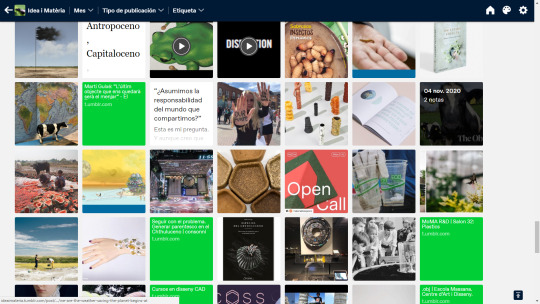
-------------------------------------------------------------------------------------
Corporeidades
https://blog.rtve.es/metropolis/2020/09/metr%C3%B3polis-compilados-el-cuerpo.html
"Volver dentro del cuerpo"
es la II parte de la exposición de los proyectos beneficiarios de las Ayudas Injuve para la Creación Joven en la modalidad de Artes Visuales en las líneas de producción y de movilidad, con las propuestas de los 17 jóvenes creadores beneficiarios de las Ayudas a la Creación Joven de Injuve presentadas en los últimos meses en la Sala Amadis de Madrid.
http://www.injuve.es/creacionjoven/noticia/volver-dentro-del-cuerpo-ayudas-exposicion-artes-visuales-ii?
ideaimateria.tumblr.com/search/paulasreef4
paulasreef4.tumblr.com/archive
citar la font sempre quan es publica: guia-basica-de-citacio-i-bibliografia_15558.pdf
youtube
youtube
3 notes
·
View notes
Text

Eva Hesse Archive. Paul Klee Quotes by Victor Moscoso, 1956.
16 notes
·
View notes
Text


Absurd
Yesterday I did another cast of the inside of a toilet roll, this time I dropped in some strands of raffia just to see what would happen.
I was inspired after listening to a podcast on Eve Hesse. The podcast is called Recording Artists: Radical Women, it describes itself as:
A new podcast that explores the lives of six women artists—Alice Neel, Lee Krasner, Betye Saar, Helen Frankenthaler, Yoko Ono, and Eva Hesse—through archival interviews and discussions with contemporary artists and art historians.
Eve Hesse used the word absurd a lot. She used it to describe her work and her life and in some parts of an interview, even to describe the type of question she was being asked. Here’s a bit of the transcript:
HESSE: First, when I work, it’s only the abstract qualities that I’m really working with. Which is then, say, the material form it’s going to take and the size and the scale and positioning, where it comes from, the ceiling or if it lies on the floor. However, I don’t value the totality of the image on these abstract or aesthetic points. For me, it’s a total image that has to do with me and life. It can’t be divorced, because as an idea or composition or form, I don’t believe art can be based on that. So that it is inevitable that it is my life, my feeling, my thoughts. And they are very complex. I’m not a simple person. And if I can name content then, on that level, maybe it’s the total absurdity of life.
Feeling inspired by Hesse’s embrace of the absurd, I will carry on making toilet roll casts and try to add as many absurd things as possible.
1 note
·
View note
Text
Eva Hesse and Oberlin
In addition to over 120 Hesse works, the Allen Memorial Art Museum (AMAM) manages the Eva Hesse archive of over 1,300 items. The archive was given in gratitude for the museum’s early and ongoing support; the AMAM was the first museum to purchase one of Hesse’s sculptures, Laocoön, (1966).
The AMAM has published several titles drawing from the archive and its rich holdings of Hesse’s work, such as a facsimile edition of her Datebooks, 1964/65 (Art Limited Access Minis, N6537.H4 A2 2006) and, in 2019, Eva Hesse: Oberlin Drawings (Art Library NC139.H47 A4 2019).

4 notes
·
View notes
Text
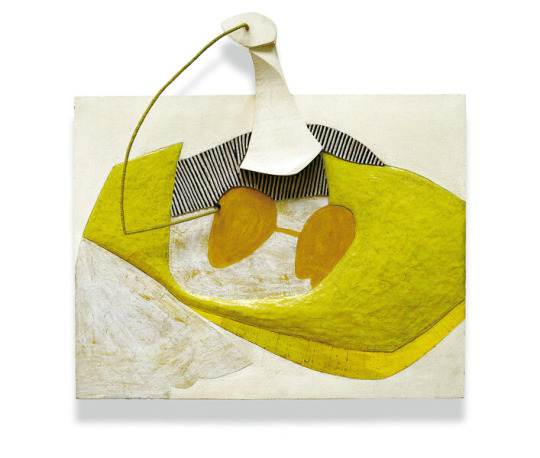
EVA HESSE, H + H, 1965
Varnish, ink, gouache, enamel, cord, metal, found object (wood), paper-caché, unknown modeling compound, particle board, wood
68.6 x 69.9 x 12.4 cm / 27 x 27 1/2 x 4 7/8 in
Courtesy of the Ursula Hauser Collection, Switzerland © The Estate of EvaHesse | Photo: Archive Ursula Hauser Collection, Switzerland
1 note
·
View note
Text
Eva Hesse
Eva Hesse was a Jew born in Nazi Germany, who only narrowly escaped the fate that all her grandparents had succumbed to. She moved to New York with her family in 1939, and graduated from Cooper Union and Yale School of Art. In 1959, she moved back to New York City, and began her career as a painter. Hesse quickly married a sculptor by the name of Tom Doyle, and after a 14 month residency together in Germany, she began blurring the lines between painting and sculpture by incorporating three-dimensional elements into her work. Hesse was known for pushing the boundaries in her art and personal life. She wanted to be on an equal footing with her husband, and was one of the few women regarded as influential to the New York art scene of the 1960s. And, even though she died in 1970 from a brain tumor at the age of 34, her career had only just begun.
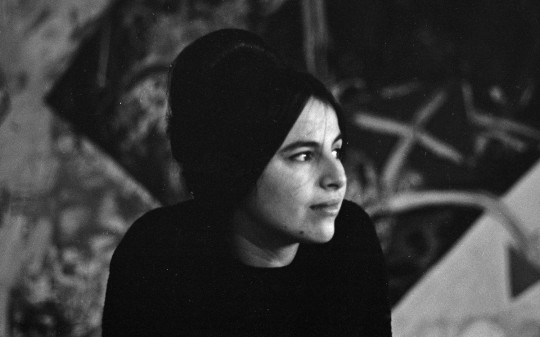
One of Hesse’s most important works is Hang Up, because it marked her transition from painter to sculptor. Created in 1966, this piece was neither a painting, nor a sculpture. It was simply art, not defined or limited by two previously separated mediums. Eva had a particular fondness for this piece because it was the first piece that achieved the level of “absurdity or extreme feeling” that she had been striving for. The addition of the steel wire, which protrudes awkwardly into the space, quite literally turns the painting into a sculpture, while simultaneously transforming the painter into a sculptor.

Hesse’s body of work aimed to “challenge the norms of beauty and order.” She was often drawn to industrial materials, such as the steel tube in Hang Up, because she liked how these non-archival (or impermanent) materials degraded over time. Hesse stated, “Life doesn’t last; art doesn’t last. It doesn’t matter.” This view about the temporality of life, can be traced back to tramautizing memories of her and her sister’s narrow escape from the Nazi Regime in Germany. Hesse’s process was very physically involved, and almost therapeutic through her incorporation of three-dimensional elements, because it allowed her to release her deepest anxieties and emotions into her work with her hands. As a result, she was much more interested in the process of creation, rather than the finished work itself.
And although this process was a crucial part of Hesse’s work, Hang Up was in fact fabricated by her husband, Doyle, and their fellow artist and friend, Sol LeWitt. The wooden frame was wrapped in bedsheets, sealed with acrylic, and painted in a subtle gradient that transitions from a soft pink to a middle grey. The steel tube was wrapped with a cord and sealed with acrylic. These hand made elements are a recurring theme throughout Eva’s body of work, and are thought to be an homage to the old tradition of hand craft that women had been confined to. Hesse incorporated these traditional techniques of making, as a form of feminist commentary.
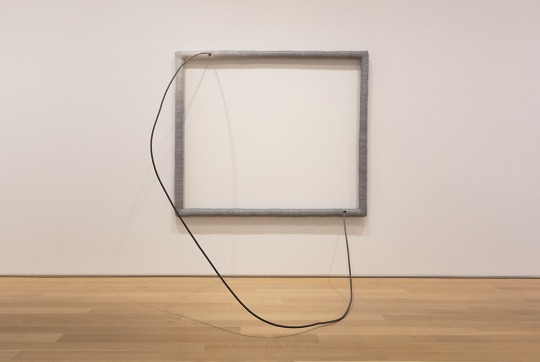
The humorous title of this piece points to the irony of creating a sculpture to comment on the medium of painting. Hesse’s sculpture only includes the frame and the wire by which it is meant to be hung, which intentionally leaves the frame empty. The oversized steel wire is a disorienting presence, because it removes the perceived space between the audience and the artwork. Ultimately, Hang Up, as well as many of Eva Hesse’s other works, kindled a heated debate about what art was and how it would evolve in the future due to the many paradoxes it presented.
Charlotte Logeais, February 29, 2020.
1 note
·
View note
Text
‘Taking Heiner Müller’s idea of the loose ekphrasis as a starting point, we will spend the semester moving back and forth from text to image as a means of finding the space between—all the while discussing issues of craft. We will read and discuss the journals and notebooks of writers and artists, as well hybrid texts and artist’s books (texts that incorporate images and artwork). Such texts may include: the archives of Robert Mapplethorpe, Eva Hesse, and David Wojnarowiz; notebooks and journals by Louise Bourgeois, Antonin Artaud, and Marlene Dumas; and artists’ books and texts by Tacita Dean, Marguerite Duras, Julie Ault, Moyra Davey, Hannah Höch, Ana Mendieta, and Felix Gonzalez Torres. We will visit art galleries and museums, an archive, and bookshops—such as Printed Matter, the New Museum Bookstore, and the PS1 Bookstores—that specialize in artist’s books. The final project will be a text of poems with images.’
1 note
·
View note